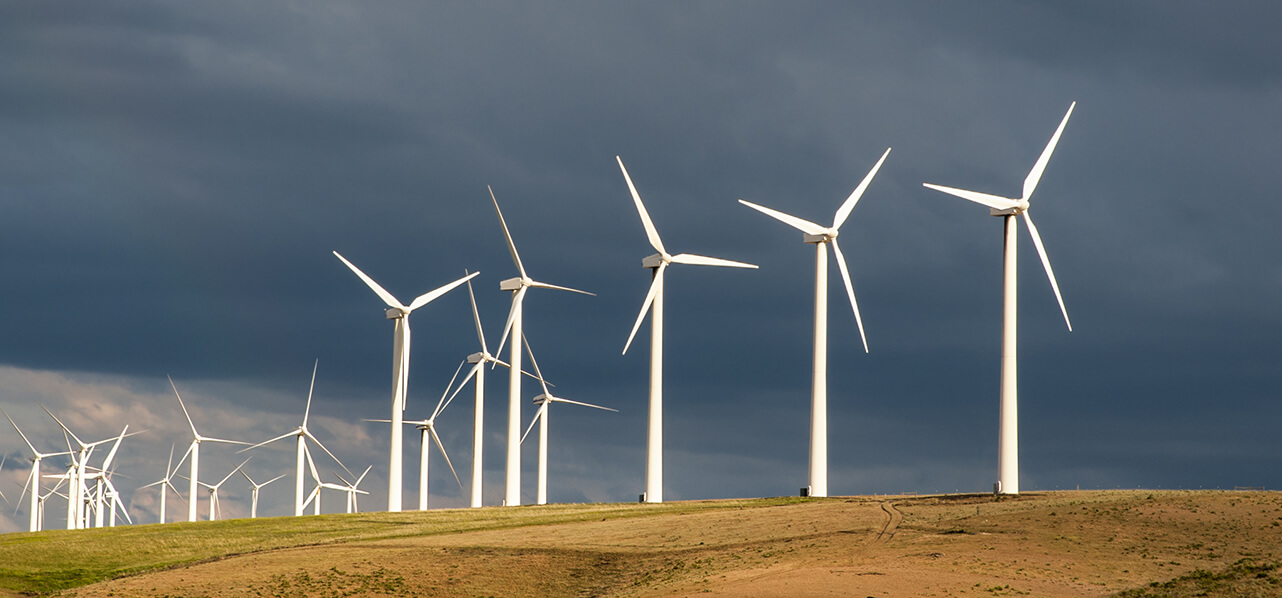On 15 September 2021, Royal Decree-Law 17/2021 of 14 September 2021, providing for urgent measures to mitigate the impact of soaring natural gas prices in the retail gas and electricity markets (“RD-L 17/2021”) was published in the Spanish Official Gazette (BOE) and came into force the following day.
RD-L 17/2021 includes several tax and regulatory measures that aim to minimise the impact of rising wholesale power prices for Spanish electricity consumers. The measure, which is most relevant for renewable energy asset owners is a mechanism for the temporary reduction (until 31 March 2022) in the remuneration of electricity production activity to reduce windfall profits (i.e. extra profits earned from non-emitting plants on the back of high gas and carbon prices) that, in the Government’s view, are received by these generators (the “Mechanism”). Other regulatory and tax measures included in RD-L 17/2021 are detailed in the Annex to this Memorandum.
The Mechanism has been justified by the Government in the Preamble of RD-L 17/2021 on the following grounds:
- the evolution of the quotation of greenhouse emission rights in the European market, which shows values above 60 €/ton, and increases of 120 % with respect to the value of a year ago;
- the unprecedented rise in the price of natural gas across national and international hubs (in the Iberian gas market, managed by MIBGAS, the spot gas price at the virtual balancing point -VBP- has recently exceeded €60/MWh, compared to the minimum prices of the year recorded in February, which were around €15/MWh. This represents an annual increase of almost 300 %); and
- the need, in the Government’s view, to incorporate regulatory instruments that, in view of the exceptional circumstances of the raw materials markets, temporarily limit the excess remuneration obtained by non-greenhouse gas emitting installations to the detriment of all consumers.
The Mechanism will require plants that fall within its scope – during the period of application of this temporary measure – to pay back to the Spanish electricity system an amount based on the energy generated by the plant, the cost of natural gas in MIBGAS and the number of hours in a month where combined cycle gas turbines (CCGTs) set the price.
The key points of this Mechanism are summarised below.
The following facilities are expressly excluded from its scope of application: (i) facilities that have a specific regulated remuneration scheme (i.e. subsidised renewable assets); (ii) facilities in the electricity systems of non-peninsular territories; and (iii) facilities with net power equal to or less than 10 MW. The amount subject to pay back is based on a mid-merit CCGT SRMC if gas prices are higher than 20€/MWh.
The formula to calculate the price / amount to pay back is:
- Price to pay = Energy generated x (Gas price – 20) x α / FMIG;
- FMIG = mid-merit CCGT (55%) / weighted average of hours in month where CCGTs set the price;
- Average Factor of Internalising Natural Gas (FMIG in Spanish);
- The α factor aims to make the measure proportional, and it is set at 0.9; and
- In the hours where the marginal price is set by a technology other than CCGT, it will be assumed the offer has internalised the CCGT cost if there are CCGTs with bids within 10% of this value. This will be considered in calculating the FMIG, and it disincentivises non-emitting plants from bidding based on CCGT running costs.
Settlement/payment of the relevant amounts will be made monthly and the system operator must notify the generator before the 15th of each month the amount to be paid. Once this notification has been made and received by the owners of the affected facilities, they shall have one month to pay the said amounts to the system operator.
The payments referred to in the previous paragraph shall be considered payments on account of the settlement that the system operator shall make for each facility once the definitive data on production measurements at busbars for the period are known.
The amounts derived from the settlements will be considered as liquid / available income of the system, and will be used to finance the costs funded by the electricity system charges of article 16.1 of the LSE and to cover, if applicable, temporary mismatches between income and costs of the system.
Although article 4 of RD 17/2021 states that the remuneration of the affected facilities will be reduced “by an amount proportional to the greater income obtained by these facilities as a result of the incorporation of the value of the price of natural gas into electricity prices on the wholesale market”, article 5 provides that the Mechanism will be applied to relevant non-emitting plants regardless of the contracting method used (i.e. regardless of whether generators sell electricity on the wholesale market or through power purchase agreements (PPAs)).
Therefore, on the face of RD 17/2021, energy sold outside the daily market (through bilateral agreements, including at a fixed price) would also be subject to the Mechanism and therefore reduced as it would be assumed under RD 17/2021 that all of the energy sold (regardless of the contracting method used) is internalising the opportunity cost of selling it on the daily market, where the cost of natural gas is already internalised.
Accordingly, there appears to be a contradiction between the statement and the wider aim of the Mechanism included in section 4 of RD 17/2021 and the provisions that regulate the practical application of the Mechanism.
As a result, the Mechanism introduced by RD-L 17/2021 has generated discussion and interest in the renewables sector due to the direct effect that it could have on the remuneration of energy generation facilities using renewable sources that have signed bilateral contracts at a fixed price for all or part of their production.
In this respect, several news articles have been published in recent days suggesting that, according to several sources in the sector, the Government may publish a clarifying note to exclude from the scope of application of the Mechanism all those generation facilities which, strictly speaking, have not benefited from an extraordinary increase as a result of the rise in the price of electricity due to the increase in the price of gas (e.g. those subject to fixed price PPAs).
Within this context, on Monday 20 September 2021, the Government published a note (the “Note”) clarifying the Mechanism. In particular, the Note clarifies that Articles 4 and 5 of RD-L 17/2021 must be interpreted in accordance with the purpose of the regulation, which establishes that the reduction only applies “in an amount proportional to the greater income obtained by these installations as a result of the incorporation into electricity prices on the wholesale market of the value of the price of natural gas by the marginal emitting technologies”. In other words, if there are no windfall profits as described in article 4 above (and this could be demonstrated – see further below), these projects / installations will be excluded from the application of the Mechanism.
In this regard, the Note states that the owners of facilities that meet all the following requirements will not be subject to the Mechanism:
(i) that the electricity produced is covered by a forward contracting instrument(s) (bilateral agreement(s))¹, whose date of signature was prior to the date of entry into force of RD-L 17/2021;
(ii) that these contracting instrument(s) are at a fixed price. In other words, that they do not have a recognised delivery price indexed to the spot market price of electricity production²; and
(iii) that these contracting instrument(s) are not intra-group contracts (i.e. contracts signed between the generator and any company in its business group for the sale of the energy produced by the generator, ultimately to a marketer in the same group).
In order to demonstrate compliance with the above requirements, the following information must be provided:
(i) responsible declaration by the owner of the facility of the monthly energy covered per facility with forward contracting instrument(s), including the volume, price and delivery or settlement period of the energy negotiated and committed in fixed price contracts, with physical delivery or with financial settlement previously declared, where applicable, in the clearing houses (cámaras de compensación) in which these facilities have been registered;
(ii) information accrediting the contracting of said energy with a third party, or through a market or intermediary agency; and
(iii) information accrediting the communication of said operations to the corresponding body (under the REMIT or EMIR regulations), justifying, where appropriate, the absence of said accreditation.
This documentation shall be provided to the System Operator, who shall issue it to the National Markets and Competition Commission (“CNMC”, in its Spanish acronym), as the body responsible for settlements.
Senior Associate Ignacio Soria also contributed to this article.
[1] According to the Note, the scope of the exemption of this Mechanism will correspond to that part of the energy that is effectively covered by these contracting instruments/agreements.
[2] According to the Note, in the case of partial indexation to the spot market price in such contracts, only the energy linked to the non-indexed part of the contract shall be exempt.
ANNEX
1. The main tax measures adopted are (i) the extension of the temporary suspension of the Tax on the Value of Electricity Production (IVPEE) for an additional quarter and (ii) the reduction of the Special Tax on Electricity (IEE) tax rate from 5.11 to 0.5 per cent until 31 December 2021. These tax innovations introduced in RDL 17/2021 are set out below:
1.1 IVPEE: determination of the tax base and fractioned payments during 2021: Royal Decree-Law 12/2021, of 24 June, already suspended the IVPEE during the third calendar quarter (between July and September), which led to a modification for 2021 of the calculation of the tax base and fractioned payments regulated in the tax law (Law 15/2012, of 27 December). Now, with the approval of article 2 of RD-L 17/2021, the temporary suspension of the IVPEE is extended for an additional quarter, also entailing the modification of the determination of the tax base and the amount of the tax instalments during the financial year 2021.
1.2 IEE: tax rate: The sixth additional provision of RDL 17/2021 regulates, with effect from 16 September 2021 and in force until 31 December 2021, the reduction of the IEE tax rate, which is set at 0.5% (until 15 September it was set at 5.11269632%). In order to comply with the minimum levels of taxation established in Council Directive 2003/96/EC, of 27 October 2003, restructuring the Community framework for the taxation of energy products and electricity, the resulting quotas from the application of this tax rate may not be less than the following amounts:
1.3 €0.5 per megawatt-hour (MWh), where the electricity supplied or consumed is used for industrial purposes (those carried out at high voltage or in industrial plants and facilities, and those carried out at low voltage for agricultural irrigation purposes), on vessels docked in port which do not have the status of private pleasure craft or in rail transport; and
1.4 €1 per megawatt-hour (MWh), when the electricity supplied or consumed is used for other purposes.
2. Other regulatory measures (apart from the temporary reduction in the remuneration of the electricity production activity) are the following; (i) the introduction of long-term power purchase agreement auctions for the allocation of infra-marginal, manageable and non-CO2 emitting; (ii) the introduction of a specific criteria for the rational use of water resources; and (iii) the creation of the minimum vital supply for vulnerable consumers who are beneficiaries of the social energy voucher (“Bono Social Eléctrico”). These measures are described below:
2.1 Auctions of long-term power purchase agreements for the allocation of infra-marginal, manageable and non-CO2 emitting: Article 3 of RDL 17/2021 introduces, in the form of auctions, a mechanism to promote long-term energy agreements to provide independent marketers and direct consumers with access to generation based on infra-marginal generation technologies that do not emit CO2.
The sellers will be the dominant generation operators and the buyers may be either the marketers – not belonging to any of the business groups whose parent company has been considered as main operator in the electricity sector and which have a portfolio of electricity customers – or the direct consumers in the market (large consumers) or their representatives. Reference marketers may also participate as buyers (although only when the formula for calculating the PVPC energy price is updated so that it is linked to this mechanism).
The generation to be auctioned will correspond to a maximum of 25% of the lowest annual energy value generated over the last 10 years of the facilities affected and the energy will be delivered through fixed-term forward contracts, with a settlement period equal to or greater than one year.
Also, article 3 mandates the government to approve a calendar for these auctions, the first of which must be held before the end of this year. A resolution by the Secretary of State for Energy will establish key aspects of the auctions, such as the sellers, the date on which the auction is to be held, the specific energy to be auctioned and the maximum percentage of purchase by buyers, among other issues.
2.2 Criteria for the rational use of water resources: Article 10 of RDL 17/2021 amends the consolidated text of the Water Law, approved by Royal Legislative Decree 1/2001, of 20 July, by adding a series of paragraphs to the wording of section 2 of article 55 of the consolidated text. Thus, the reform provides that for those reservoirs with a total capacity of more than 50 hm3 whose main uses are not supply, irrigation and other agricultural and livestock uses, where appropriate in view of the reservoir water reserve and the seasonal forecast, the basin authority shall establish at the beginning of each hydrological year, a series of hydrological variables, including:
(i) a minimum and maximum regime of average monthly flows to be released for situations of normal hydrological conditions and prolonged drought;
(ii) a system of minimum volumes of reservoirs for each month; and
(iii) the minimum monthly reserve that must remain stored in the reservoir to avoid undesirable environmental effects on the fauna and flora of the reservoir and the bodies of water associated with it.
In the procedure, the basin authority shall in all cases give a hearing to the concession holder, to the competent bodies for river fishing in the corresponding Autonomous Region and to the municipalities bordering the reservoir.
2.3 Minimum vital supply: Article 1 of RDL 17/2021 introduces an article 45 bis and modifies section 3 of article 52 of Law 24/2013, of 26 December, on the Electricity Sector, establishing, as a consumer protection measure, a minimum vital supply for vulnerable consumers who are beneficiaries of the Bono Social Eléctrico.
This measure, of a permanent nature, is part of the objectives pursued by the National Strategy against Energy Poverty 2019-2024, which highlighted the need to articulate complementary instruments for the protection of electricity consumers in a situation of vulnerability, and pointed out the need to protect households from the consequences of energy poverty, guaranteeing the right to electricity for all vulnerable consumers through a minimum vital supply that avoids the total disconnection of their supply.
With this measure, the four-month period currently envisaged for vulnerable consumers to pay their electricity bill without their supply being interrupted, is extended by an additional six months.
Likewise, this measure is complemented with the amendment of Royal Decree 897/2017 of 6 October 2017, which regulates the figure of the vulnerable consumer, the social discount rate and other protective measures for domestic consumers of electricity, in order to adapt said regulation to the amendments introduced by RDL 17/2021.
3. In addition to the main measures described above, the following should also be highlighted:
3.1 The amount corresponding to the greenhouse gas emission allowances that will be used to finance the costs of the electricity system is increased, rising from the €1100m euros set for 2021 to €2000m. These revenues will be used to reduce charges for other system costs.
3.2 The charges for other system costs are updated downwards to take into account the additional revenue for the electricity system as a result of the measures approved in RDL 17/2021. This update will be applicable from the date of entry into force of RDL 17/2021 (i.e. 16 September 2021) until 31 December 2021 with the consequent obligation imposed on retailers to pass on the discount associated with these lower charges in the bills they issue to consumers corresponding to consumption made since the entry into force of the royal decree-law.







